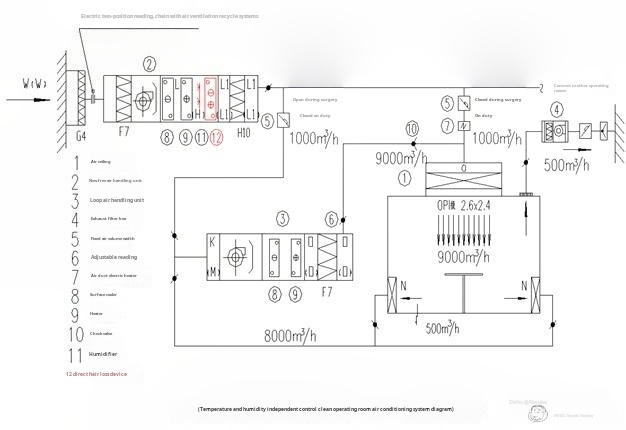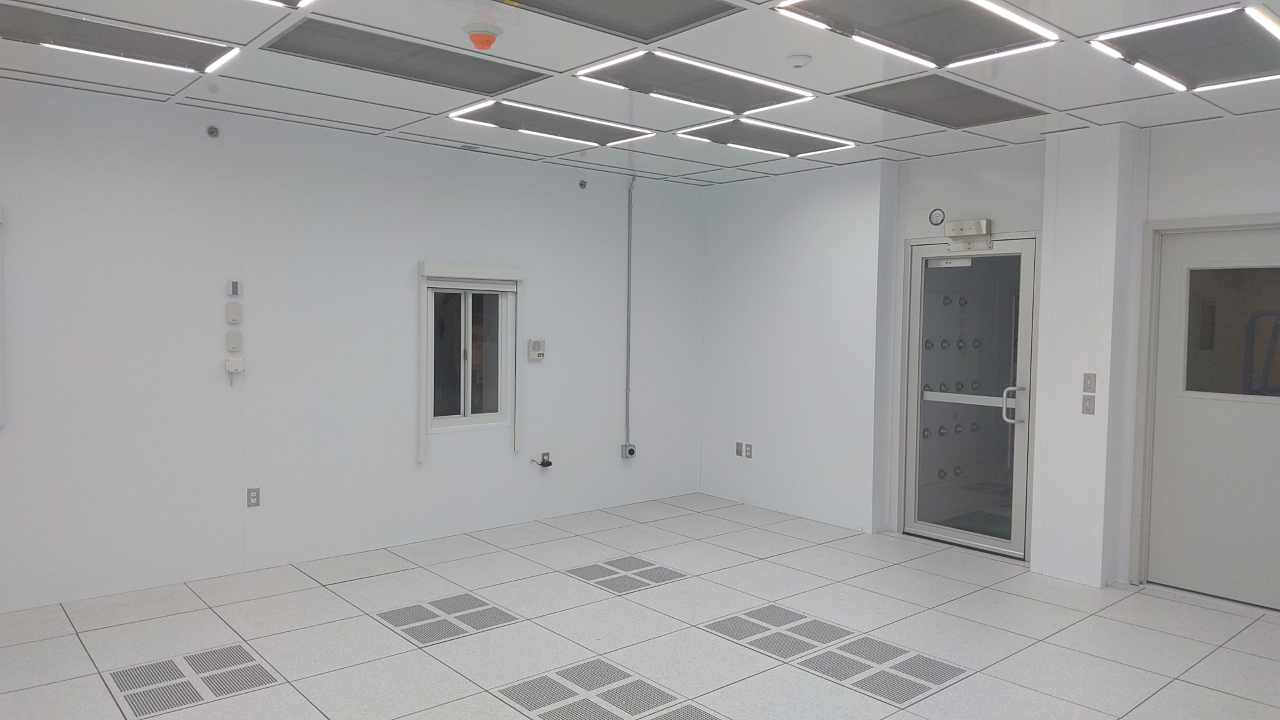In the dynamic environment of modular cleanrooms, maintaining precise temperature and humidity levels is essential for ensuring optimal conditions for sensitive processes. These environments utilize advanced HVAC (Heating, Ventilation, and Air Conditioning) systems to achieve the required climatic conditions. This article explores the methods by which modular clean rooms manage these crucial environmental factors.
Temperature Control
HVAC Systems
modular cleanrooms employ sophisticated HVAC systems that incorporate various components to manage temperature effectively. These systems are integral in maintaining a steady climate within the cleanroom.
Cooling and Heating
Depending on specific needs, modular cleanrooms may use chillers, heating coils, and thermal storage systems to adjust the air temperature. For instance, systems designed by Deiiang™, under the expertise of product designer Deiiang Jason.peng, seamlessly integrate these components to deliver precise temperature regulation, critical for processes requiring exact thermal settings.
Integration
Temperature control systems are typically integrated with the cleanroom's air handling systems. This integration ensures precise management and uniform distribution of temperature across the environment, minimizing hotspots and ensuring consistent conditions.
Humidity Control
Dehumidification and Humidification
The HVAC systems in cleanrooms are designed to manage both dehumidification and humidification, depending on the specific process requirements.
Cooling Coils
Within HVAC systems, cooling coils draw excess moisture from the air as it passes over them, effectively dehumidifying the space. This process is vital for environments sensitive to high humidity, which can affect product quality.
Steam Injection
When humidification is necessary, steam injection systems add moisture back into the air. This ensures the air maintains optimal humidity levels, crucial for operations like pharmaceutical manufacturing where precise humidity control is essential.

Monitoring and Control
Sensors
Cleanrooms are equipped with sensors that continuously monitor temperature and humidity, transmitting data to a central control system. These sensors are critical for maintaining the desired environmental conditions.
Real-Time Adjustments
Control systems analyze this data and make real-time adjustments to the HVAC systems to maintain the desired conditions. Advanced systems automatically adjust according to preset parameters, ensuring optimal conditions are maintained consistently.
Calibration
Regular calibration of sensors and monitoring systems is essential to ensure their accuracy in maintaining the required conditions. Ensuring these systems are well-calibrated allows cleanrooms to meet international standards, providing a reliable environment for critical processes.
What is a Reasonable Standard for Temperature and Humidity Control in the Maintenance Room?
| Parameter | Recommended Range |
|---|---|
| Temperature | 20°C to 24°C (68°F to 75°F) |
| Humidity | 45% to 60% relative humidity (RH) |
| Monitoring | Automated systems with alarms for quick response |
What Should You Keep in Mind About the Impact of Temperature Monitoring in Cleanroom Suites?
- Consistent Conditions: Consistency in temperature is crucial for cleanroom suites. Fluctuations can lead to contamination and affect product quality.
- Compliance with Standards: Temperature monitoring must comply with industry regulations and standards, such as ISO 14644.
- Quick Response Protocols: Establishing quick response protocols is essential when temperature deviations occur.
What Should the Humidity Be in a Semiconductor clean room?
Ideal Humidity Range: In semiconductor clean rooms, humidity should be maintained between 30% and 50% relative humidity (RH). This range minimizes the risk of electrostatic discharge, which can damage sensitive electronic components.
Dehumidification Techniques: Effective dehumidification systems are crucial for maintaining optimal humidity levels.

Are Clean Rooms Colder?
Controlled Temperatures: Clean rooms are not necessarily colder than typical environments. They are maintained at controlled temperatures, generally ranging from 20°C to 24°C (68°F to 75°F), to support specific processes and personnel comfort.
Airflow Impact: The perception of coldness in clean rooms often results from high airflow rates. Increased air changes per hour can create a cooler sensation.
Comfort Considerations
While clean rooms are maintained at standard temperatures, the high airflow and ventilation systems can lead to a cooler sensation for personnel. Proper clothing and acclimatization are necessary for comfort in these environments.
What is the Temperature and Humidity in the Decontamination Room?
| Parameter | Recommended Range |
|---|---|
| Temperature | 18°C to 24°C (64°F to 75°F) |
| Humidity | 30% to 60% relative humidity (RH) |
ISO 8 Cleanroom Temperature Requirements
iso 8 cleanrooms, used in environments with moderate contamination control needs, have specific temperature requirements to ensure a stable and productive environment. Typically, the temperature in these rooms should be kept between 18°C (64°F) and 24°C (75°F) to ensure comfort and optimal performance of both personnel and equipment.
Temperature Control for iso8 Cleanrooms
iso 8 cleanrooms should maintain consistent temperatures to prevent environmental fluctuations that could affect both sensitive equipment and materials.
Monitoring and Maintaining Temperature
Temperature should be regularly monitored with precise control systems to maintain stability.
ISO 7 Cleanroom Humidity Requirements
Humidity control is critical in ISO7 cleanrooms, which are designed for more stringent contamination control than ISO 8. Humidity should be maintained within a range of 30% to 60% to prevent issues like electrostatic discharge (ESD), condensation, and contamination.
Humidity Control in ISO7 Cleanrooms
Maintaining optimal humidity is crucial to avoid issues like static electricity buildup or mold growth. Humidity should be continuously monitored and adjusted using humidifiers or dehumidifiers as necessary.
cleanroom temperature and Humidity Control Equipment - Dehumidifiers, HVAC
Cleanroom environments demand precise temperature and humidity control. To maintain these conditions, specialized HVAC systems and dehumidifiers are crucial. These systems work together to regulate both temperature and humidity levels, ensuring that cleanrooms remain within their required environmental parameters for optimal performance. This equipment is essential for industries like pharmaceuticals, biotechnology, and semiconductor manufacturing.
HVAC Systems
HVAC Systems are at the core of cleanroom environmental control. They are designed to filter, heat, cool, and circulate air, ensuring the desired temperature and humidity are maintained. HVAC systems are equipped with precise sensors that continuously monitor air conditions and adjust the system accordingly.
Dehumidifiers
Dehumidifiers play an important role in preventing excessive moisture in the cleanroom environment. Excess moisture can lead to microbial growth or condensation, which compromises the cleanliness of the room.
Cleanroom Humidification and Dehumidification
Use of HVAC Systems
HVAC systems are the backbone of cleanroom climate control, ensuring the desired air quality, temperature, and humidity. They filter air and maintain constant air circulation for stability.
Use of Dehumidifiers
Dehumidifiers remove excess moisture to maintain humidity levels within the desired range, preventing issues like condensation and mold growth while maintaining the ideal environment for sensitive materials.
Maintaining Optimal Environmental Conditions
Relevant Domestic and International Standards
- iso 14644-1: Defines the classification of cleanrooms based on particulate contamination levels.
- iso 14644-2: Provides requirements for Cleanroom Testing and monitoring.
- ISO 14644-3: Provides methods for measuring the air cleanliness of cleanrooms.
- GMP (Good Manufacturing Practice): Includes specific regulations for the environmental conditions within pharmaceutical and medical device cleanrooms.
- ASHRAE Standard 170: Provides standards for ventilation systems in healthcare and cleanroom environments.
- FDA 21 CFR Part 210 & 211: Regulatory guidelines for the design and operation of cleanrooms in drug manufacturing.
Conclusion
Effective temperature and humidity control in modular cleanrooms is a sophisticated process that ensures a stable and compliant environment for various applications. By employing advanced HVAC systems, real-time monitoring, and precise control, facilities can maintain optimal conditions crucial for quality and process integrity. Deiiang™, through innovative design by Deiiang Jason.peng, provides solutions that meet these exacting standards, illustrating the critical role of climate control in maintaining cleanroom efficacy.
Common Questions and Answers
1. How do modular cleanrooms control temperature?
Through integrated HVAC systems with components like chillers and heating coils tailored for precise regulation.
2. What role do sensors play in cleanroom climate control?
Sensors monitor temperature and humidity, allowing the system to make real-time adjustments.
3. Why is humidity control vital in cleanrooms?
It prevents conditions like static discharge and ensures consistent product quality.
4. How is air dehumidified in a cleanroom HVAC system?
Cooling coils in the system remove excess moisture from the air.
5. What is necessary for maintaining accurate sensor readings?
Regular calibration of sensors ensures they provide accurate data for maintaining required conditions.
References
- ISO 14644-1: Cleanroom Standards
- HVAC Technology in Cleanrooms, Journal of Environmental Control
- Deiiang™, Innovations in Cleanroom design
- Advances in Humidity Control, International Journal of Building Physics
- Deiiang Jason.peng, Leading Innovations in Cleanroom Technology
 +86 18186671616
+86 18186671616 Jason@cleanroomequips.com
Jason@cleanroomequips.com
 MENU
MENU



